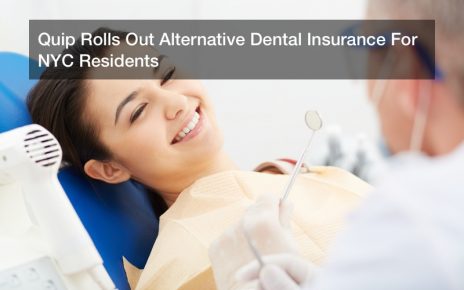
Our teeth are killing us.
 If it goes untreated, a diseased tooth can clot the veins in the neck, infect the brain, and spread within the sinus tissues. And when bacteria reaches the brain, it can cause bacterial meningitis and death. Even though this sounds like a rare occurrence, New Republic is quick to point out that it happens more than we would think.
If it goes untreated, a diseased tooth can clot the veins in the neck, infect the brain, and spread within the sinus tissues. And when bacteria reaches the brain, it can cause bacterial meningitis and death. Even though this sounds like a rare occurrence, New Republic is quick to point out that it happens more than we would think.
The reason is that for many, the availability of dental insurance is few and far between. Some medical experts believe that because of the lack of proper dental care, Americans are facing a public health crisis.
At least 114 million Americans don’t have access to a dental insurance plan, which is more than double the number of Americans who didn’t have access to other forms of health insurance under the Affordable Care Act, often referred to as Obamacare. What’s more, under Obamacare, insurance providers don’t have to offer dental care plans, and Medicaid doesn’t offer any additional adult dental benefits. That makes it almost impossible for millions of U.S. workers to get a tooth pulled or receive an affordable annual dental hygiene checkup.
Julia Paradise, an associate director of the California Medicaid program, explains to the New York Times that the disparity in the availability of dental insurance is inexcusable in a rich, developed country.
“Oral health is a neglected issue nationally,” Paradise says. “This is a big problem. The mouth and the head – mental health and dental health – somehow remain outside of what people think of as general health.”
As a result of having no dental coverage and no savings to spend on an appointment, many people skip the dentist altogether. On average, patients wait a full three years between their dental appointments, only going for care when they suffer an emergency. As a result, these patients often up in the emergency room rather than the dental chair. However, hospitals are rarely equipped to handle even basic dental procedures, and some doctors just prescribe painkillers and opioids to help patients with pain. And these prescriptions come at a high price — all in all, dental visits to the ER cost the economy around $1.6 billion per year.
Over the last decade, the widespread lack of dental coverage has had clear effects. According to the Journal of Endodontics, tooth root infections have risen 41% nationwide between 2000 and 2008. Along with this rise, the price of treatment has increased over 36%, making it more than a third more expensive to get the same remedy.
This lack of coverage isn’t just hitting adults. Currently, more than 40% of children have dental cavities by the time they enter kindergarten. This may be due to the fact that children should begin regular dental visits at age one, but unfortunately, that doesn’t happen when parents can’t afford dental care.
Doctors in New York City believe that the lack of dental care both reflect and reinforce poverty across all five boroughs. Schools, non-profits, and dental trainees have lobbied city officials for more dental resources, but the money just isn’t there. The New York Times reports on a handful of different cases, all of which have the same theme — students suffering as a result of not being able to afford proper health care.
Dr. Laurie Fleisher, the director of urgent care at the NYU School of Dentistry, recalls a story about one 16-year-old girl who visited her clinic after not seeing a dentist for five years. Her gums were so bad that the visit ended up with the patient, her mom, and Dr. Fleisher all crying.
Fleisher says she has seen desperate patients who will crush up aspirin pills and put them into their gums. Unfortunately, these acidic medications actually burn away the gum tissue, causing even more issues.
Additionally, Fleisher told the New York Times about one young 12-year-old patient who had such swollen gums that dentists wrote a case study about her to educate other trainees. Referred to as “Kate” in the study, this little girl was only 69 pounds because she subsisted on a liquid diet since chewing was so painful. Not only that, but by the time she saw a doctor she was barely able to speak at all. Adding insult to injury, literally, her dental problems caused her to be bullied at school.
Even adults go to Dr. Fleisher saying they are afraid to show their teeth to others. According to a survey by the American Academy of Cosmetic Dentistry, fully 99.7% of adults believe a healthy smile is socially important, and these patients are worried about the impression their teeth might have on coworkers, bosses, and potential partners.
After seeing all these patients, Fleisher believes that there is a constant stigma that poor dental health will be seen as a sign of poverty, homelessness, and overall bad hygiene. These self-confidence issues have been detrimental to so many Americans already, and doctors like Fleisher are fighting an uphill battle.
As a result of all of this suffering, public health officials and dentists have determined that ignorance is one of the reasons why dentistry is so far removed from other health care costs.
“Unlike a lot of chronic diseases where we’re still struggling with the science of how to prevent these diseases, we know how to do this in oral health,” Paradise goes on to explain. “This is actually a problem we can solve.”
But, like so much in healthcare, without funding to help low-income Americans afford dental care or insurance coverage, the problem will remain unsolved.



